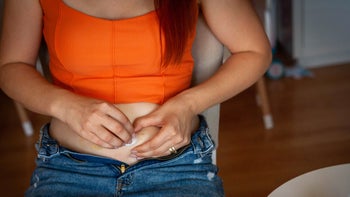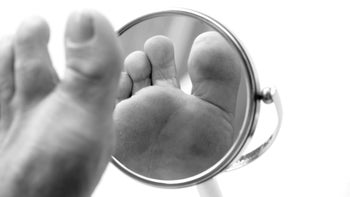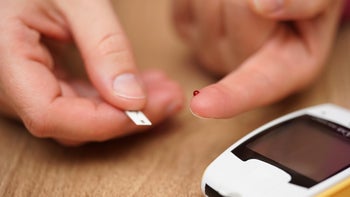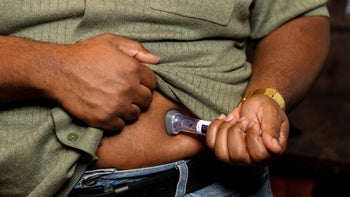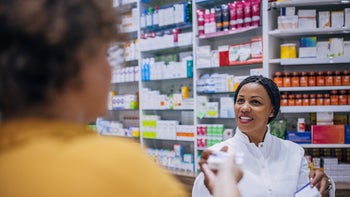
The Best (and Worst) Drinks If You Have Diabetes
Key takeaways:
Water is the best drink for people with diabetes, but it’s not the only option. There’s a long list of other healthy drinks if you have diabetes.
Many drinks have added sugars, making them high in carbohydrates. These drinks quickly raise blood glucose levels. And, because they’re also high in calories with few or no nutrients, they’re not a good choice.
Look closely at food labels: No-sugar, low-sugar, and sugar-free drinks are the best choice for people with diabetes.
When it comes to alcohol, there’s no “best” alcoholic drink for people with diabetes. But there are definitely alcoholic drinks to avoid, like sugar mixers and sweet wines. And moderation is key.
Table of contents
When people think about their diet, they often focus on food. But what you drink can have a big effect on your health too. This is especially true for people with diabetes. That's because you digest drinks faster than what you chew. And with diabetes, that can mean spikes in blood sugar.
Part of the issue is that some drinks have a long list of ingredients, including sugar and carbohydrates.
Here’s a list of the best drinks for diabetes and specific ingredients to look for.
Save on popular GLP-1 Agonists
Take control of your health. With GoodRx, you may be eligible to save even more on popular treatments.

Why do people with diabetes need to watch what they drink?
With diabetes, any amount of carbohydrates (sugar) can raise blood glucose levels. This is especially true for carbs you drink because they’re digested faster than carbs you chew.
Since sweet drinks are absorbed quickly, they can increase blood glucose levels quickly too. Staying within your glucose target range as much as possible will help to improve how you feel. And it will reduce the risk of other diabetes-related health issues.
To avoid spikes in blood glucose, you’ll need to pay close attention to the carbohydrates in your drinks — not just in your food.
It can help to know that not all carbohydrates are created equal. In fact, there are three main types:
Sugars are simple carbohydrates occurring naturally in fruits, veggies, and milk products. Added sugars are in processed foods like sugary drinks and baked goods.
Starches are complex carbohydrates found in veggies, beans, and grains.
Fibers are complex carbohydrates found in fruits, veggies, nuts and seeds, whole grains, and beans. Fibers help to slow down how quickly starches are absorbed and keep you feeling fuller, longer.
The 8 best drinks for diabetes
If you have diabetes, the best drink choices are naturally sugar free or have only a small amount of sugar. Keep in mind that the nutritional contents of drinks vary from brand to brand. So it’s important to read nutritional labels to make sure your drink of choice works with your blood sugar goals.
What’s the best diet for diabetes? Eating for diabetes doesn’t have to be complicated. If you’re just getting started, follow these tips for building tasty and nutritious meals.
Diabetes plate method: Learn this simple method for building diabetes-friendly meals that help you manage your glucose levels and meet your nutritional needs.
Is it safe to drink with diabetes? There are unique risks to drinking alcohol if you have diabetes. See these tips for how to stay safe if you decide to drink.
The good news is that there’s a long list of thirst-quenching and satisfying drinks for people with diabetes. Let’s take a look at eight diabetes-friendly drinks that don’t have excess sugar or calories.
1. Water
Plain water is the best drink for everyone, but especially for people living with diabetes. It’s naturally hydrating and free of carbohydrates and calories. How much water to drink every day depends on your age, activity level, and other health conditions. But if you’re thirsty, you can confidently grab a glass of water.
2. Carbonated or seltzer water
Sparkling water is another satisfying drink that’s free of calories, carbohydrates, and additives. But be sure to read the nutrition label. It’s easy to get surprised by added sugars when trying a new brand.
3. Water with fresh additions
If carbonation isn’t your thing, there are other ways to liven up the healthiest drink. You can keep water refreshing and interesting by adding a garnish. Here are some options:
Fresh fruit: berries and citrus slices
Fresh herbs: mint, rosemary
Frozen fruit: watermelon or grapes
4. Unsweetened tea or coffee
Coffee and tea are safe and healthy as long as you limit added sugars. Keep it simple by ordering plain tea or coffee, iced coffee, or an Americano.
Carbohydrates can add up quickly in specialty drinks, so order yours unsweetened. Then add small amounts of milk or sweeteners yourself.
5. Milk or plant-based milks (unsweetened almond or soy milk)
Milk products aren’t free of carbs, but they’re full of healthy vitamins and minerals. But beware: Some milk alternatives, like rice milk and oat milk, have more carbohydrates than others.
And some brands and flavors of plant-based milks contain added sugars. So, be sure to check the nutrition label and choose unsweetened varieties instead.
6. Drinks sweetened with stevia or monk fruit
Stevia and monk fruit are non-nutritive sweeteners that come from plant sources. Both have minimal calories or carbs.
Some drinks that are sweetened with these natural fruit extracts are Zevia, Vitaminwater Zero, and Bai products. You can also buy stevia or monk fruit and sweeten your tea, coffee, and other drinks.
7. Low-sugar kombucha
Kombucha is a fermented drink that’s full of gut-healthy probiotics. While there isn’t a standard carbohydrate amount in kombucha drinks, reading the nutrition label will help.
Brands with added fruit juice will increase the total carbohydrate amount. Be sure to look at the serving size. Some bottles have 2 servings (or more), so check how many carbohydrates it has per serving.
8. Healthy smoothie
Carbohydrates in smoothies can vary a lot. But you can make a carb-friendly smoothie at home where you control the ingredients.
Try blending the following:
8 oz milk (dairy, soy, almond)
1 tbsp Greek yogurt (unsweetened)
1 handful of frozen spinach and berries
1 tbsp chia and flax seeds
1 tsp almond butter
If the smoothie is too thick, add small amounts of water.
What are the worst drinks for diabetes?
Drinks with added sugars have extra calories and zero nutrients. And they can cause a surge in blood sugar. They’re not a good option for anyone. But you should take extra care to avoid them if you have diabetes. Many drinks you see on store shelves have added sugars.
The “Rethink Your Drink” campaign was created to reduce the number of sugar-sweetened beverages consumed by Americans. It provides helpful guidance that applies to people with diabetes too.
To “Rethink Your Drink,” avoid or limit:
Fruit juice (unless treating low blood sugar)
Sweetened coffee or tea
Sweetened sports drinks and energy drinks
Regular soda
A 12 oz can of soda contains about 10 tsp of sugar or 39 g of carbohydrates. Just 1 can of soda alone exceeds the American Heart Association’s recommendations of no more than:
6 tsp of added sugars per day for women
9 tsp of added sugars per day for men
What ingredients should you check for in your drinks?
Added sugars go by many names, so it can be hard to tell from the food label what’s healthy and what’s not.
When reading labels, avoid drinks with the following added sugars:
Raw sugar, cane sugar/juice, brown sugar
Date sugar, beet sugar, coconut sugar
Honey, agave, molasses, maple syrup
Fructose, glucose, maltose, sucrose
Corn syrup, high-fructose corn syrup, malt syrup
Invert sugar (a liquid sweetener that’s half glucose and half fructose)
If your drink contains any of these, the nutrition facts label will give you information about total carbohydrates and added sugars. Then, you can follow steps from your care team on managing carbohydrates in your diet.
Recommendations vary depending on the type of diabetes you have, as well as your age, health, and activity level.
What are safe drink additives for people with diabetes?
When you’re trying to cut back on sugar in your diet, it’s natural to turn to artificial sweeteners — or other non-caloric natural sweeteners such as stevia and monk fruit. But, similar to sugars, it’s best to limit your use of artificial sweeteners.
Generally speaking, it’s OK to have moderate amounts of more natural sweeteners. These include honey, maple syrup, dates, and others. But even they need restrictions because all sugars raise blood glucose.
The ‘best’ alcoholic drinks for people with diabetes
Having any amount of alcohol can affect your diabetes management and overall health. And it brings some safety risks. That’s because, with diabetes, alcohol raises the risk for low blood sugar (hypoglycemia). Plus, it can mask your ability to pick up on its signs and symptoms.
So, it's important to talk with your healthcare team before drinking alcohol. In general, low-carbohydrate drinks are OK to have in moderation.
If approved, stick with the daily recommendations for alcohol consumption. For women, that’s no more than 1 drink per day. For men, it’s 2 drinks per day.
When choosing a drink, keep in mind:
Light beers and dry wines have less alcohol and calories.
Sweet wines and mixed drinks contain added sugars.
For mocktails or mixed drinks, club soda or diet soda are better choices than juice or regular sodas.
Best drinks if you’re having a ‘hypo’
Experiencing hypoglycemia, or a “hypo,” is the one time when people with diabetes will need to drink fruit juices or a regular soda. A hypo is when your blood sugar is below 70 mg/dL. This can cause uncomfortable and even dangerous symptoms that you’ll need to treat.
The best way to treat this quickly is with juice or regular soda. That’s because liquid carbohydrates are absorbed quickly, so they’ll speedily raise your glucose levels.
To treat hypoglycemia, follow the “15-15 rule”:
Have 15 g of fast-acting carbohydrates (about 4 oz of juice or soda).
Wait 15 minutes.
Check your glucose.
If you’re still below 70 mg/dL, repeat these steps.
Frequently asked questions
It’s best to avoid juices if you have diabetes. This is especially true of store-bought juices that often contain added sugars, but it’s also true for freshly pressed juices.
Here’s why. When you squeeze the juice from a fruit, you get lots of sugar (fructose) without the fiber that comes from eating a whole fruit. When you eat whole fruit, the fiber content slows how quickly your body absorbs the carbohydrates from the fruit — and avoids a sugar spike.
Smoothies can be an option — but only if you make them at home. Making your own smoothie can help you control the ingredients. And it can ensure you’re including whole fruits and veggies and low-sugar liquids.
Energy drinks typically contain electrolytes, sugar, caffeine, and calories. So, they’re not a good choice for anyone, especially if you have diabetes. There are low-sugar or no-sugar options. But these contain artificial sweeteners, which may have long-term health risks.
For some extreme athletes with diabetes, regular sips of energy drinks during exercise can help them maintain a steady blood glucose level. But for most people who exercise, water is the best drink to stay hydrated.
The only exception is if you’re having a hypo (low blood glucose). In this life-threatening situation, an energy drink can help increase your blood glucose levels quickly.
Milk is an important source of nutrients for people with diabetes. But it does contain a type of sugar called lactose, so it will affect blood glucose levels. Even lactose-free milk has broken-down lactose, which can also affect blood glucose levels.
But, consumed in moderation, low-fat or fat-free milk is a safe and necessary part of a healthy and balanced diet.
Plant-based milks are also an option. But these are lower in protein and nutrient content. They don’t contain lactose, but they do contain other types of carbohydrates.
The carbohydrate content of milk alternatives depends on the type of drink you choose. Rice milk, for example, has the highest carbohydrate content. Some brands of plant-based milks contain added sugar.
So, it’s best to check the labels and look for unsweetened milks that are fortified with calcium and vitamin D.
The bottom line
With diabetes, your drink choice matters. That’s because drinks with added sugars are high in carbohydrates that quickly raise blood glucose. For your health, it’s best to replace sugar-filled drinks with no-sugar, low-sugar, or sugar-free options. By reading labels and counting carbs, you’ll be able to spend more time in your glucose target range.
Why trust our experts?


References
American Diabetes Association. (n.d.). Alcohol and diabetes.
American Diabetes Association. (n.d.). Reading food labels.
American Diabetes Association. (n.d.). Sports drinks impact on glucose (blood sugar).
American Diabetes Association. (n.d.). Understanding and managing low blood glucose (hypoglycemia).
American Diabetes Association. (n.d.). What can I drink?
American Heart Association. (2024). Added sugars.
Breakthrough T1D. (n.d.). Symptoms of type 1 diabetes.
Centers for Disease Control and Prevention. (2023). Rethink your drink.
Centers for Disease Control and Prevention. (2024). Carb counting.
Centers for Disease Control and Prevention. (2024). Get the facts: Added sugars.
Crowe, A. (n.d.). Why you should drink more water. American Diabetes Association.
DiaTribe Learn. (n.d.). Time in range.
Diabetes UK. (2024). Dairy and diabetes.



